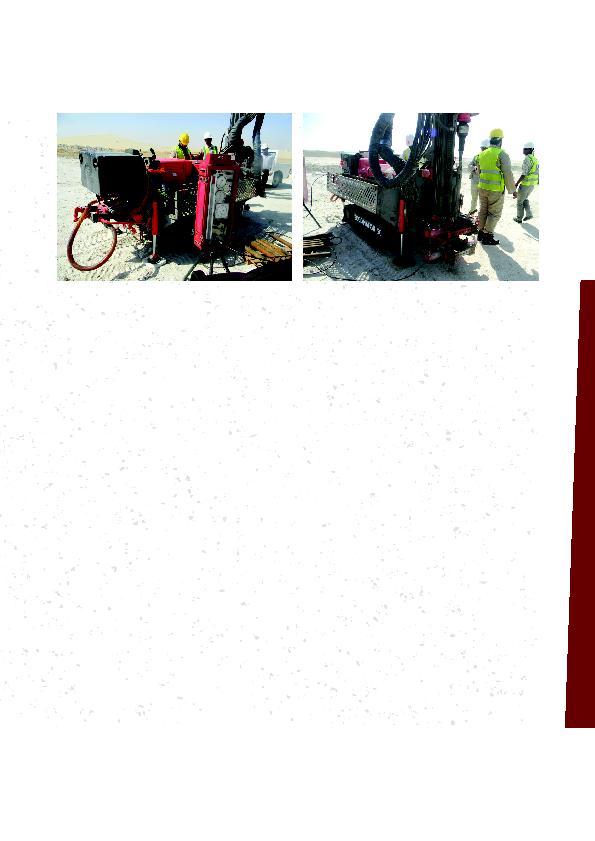
On solid ground
|
i9
37
It can be noticed from the CPT and PMT results that
the qc, Pl and Em values significantly increased after
treatment reflecting the efficiency of the carried out
Dynamic Compaction process in enhancing the soil
properties and relative density down to an average depth
of about 4 m below the ground surface.
Based on calibration areas tests' results, the following
Dynamic Compaction parameters were applied for
improving the buildings areas through the project's site:
·
Grid spacing = 6 m x 6 m
·
Weight of pounder = 1518 tons
·
Height of drop = 15 m
·
6 blows per print for Phase One
·
4 blows per print for Phase Two.
Relaxed criteria were adopted for roads and future
extension areas.
From the calibration area to the entire site:
The results of the calibration area's Dynamic Compaction
were replicated across the entire site. To do this, the team
divided the site into segments of 7,500 m
2
and applied
the following process:
·
Leveling and surveying
·
Setting the location of the Dynamic Compaction phase
in question (there were three phases)
·
Executing the phase using the parameters extracted
from the calibration area
·
Backfilling Dynamic Compaction prints and leveling.
The above process was repeated for all the phases, and
then, the final grounds were rollercompacted.
Learnings
Dar AlHandasah's work on improving the challenging
soil of the Dammam Correctional Facility resulted in
several important learnings:
·
Vibratory rolling is not suitable for deep ground
improvement, even when heavy rollers are applied
·
Dynamic Compaction successfully improved the loose
to very loose semicarbonate sandy layers containing
high groundwater
·
PMT and CPT tests in tandem are essential for quality
control and quality assurance to help overcome the
shortcomings of using one type of testing
·
Parameters of Dynamic Compaction vary with the
change in the subsurface conditions
·
Using a calibration area onsite is a key factor in the
Dynamic Compaction technique.
Final design criteria
·
Bearing capacity: 150 Kpa
·
Postconstruction maximum allowable settlement:
25 mm under service loads
·
Differential settlement as an angular distortion tolerable
limit: 1/500
·
Liquefaction factor of safety = 1.3
